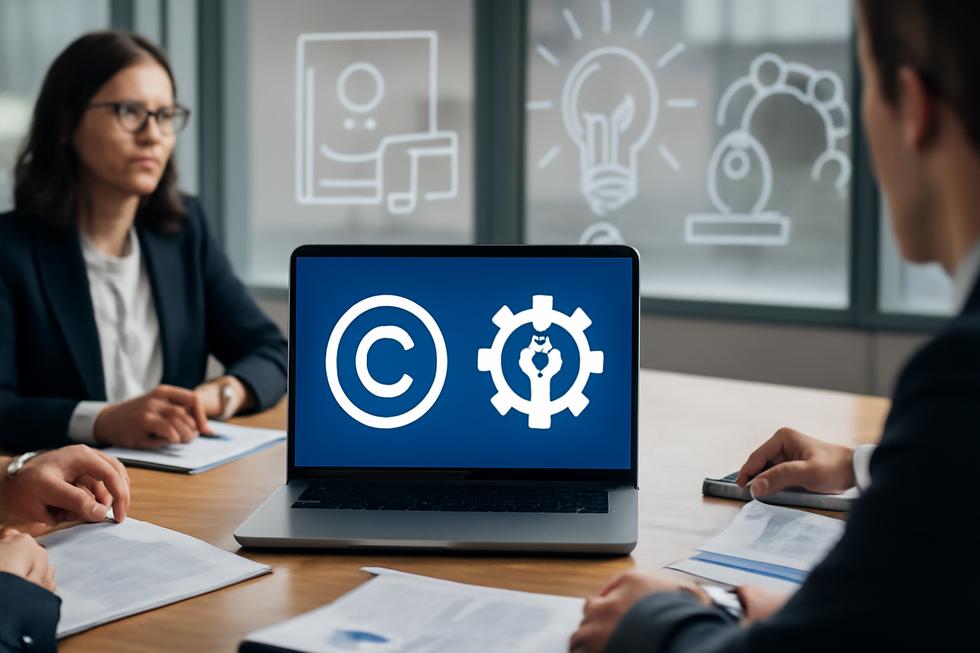Introduction
For business owners, building a competitive edge often hinges not only on innovative ideas but also on the legal protections that secure those ideas. Intellectual property law offers two fundamental forms of protection—copyright and patents—that serve distinctly different purposes and cover different types of creations. Understanding the legal foundations, subject scope, protection duration, and practical implications of these protections is essential for making informed decisions that maximize business value and minimize risk. This guide breaks down the essential distinctions between copyright and patents, explores their economic and innovation impacts, and highlights how each form of protection is applied and enforced in real business contexts. By the end, you’ll have a clear framework for how to leverage these intellectual property rights strategically and effectively.
Tables of Contents
Chapter 1: Legal Foundations of Copyright v Patent Distinctions
- Defining Technological and Functional Boundaries in Copyright and Patent Law
- Economic Dynamics Shaping Innovation: Copyrights and Patents in Legal Context
- Influence of Societal Values and Geopolitical Strategy on Copyright and Patent Law
Chapter 2: Scope and Subject Matter in Copyright v Patent Protections
- Defining Boundaries: How Copyright and Patent Laws Draw the Lines of Protection
- Defining the Core Subject Matter: Expression Versus Invention in Copyright and Patent Law
- Navigating Boundaries: How Copyright and Patent Define What They Protect
Chapter 3: Duration and Requirement Differences in Copyright v Patent Laws
- Contrasting Protection Terms of Copyrights and Patents: Balancing Innovation and Cultural Legacy
- Navigating Novelty and Formalities: The Divergent Entry Criteria for Copyright and Patent Protection
- How Duration and Formalities Shape Innovation and Access in Copyright and Patent Systems
Chapter 4: Economic and Innovation Impacts of Copyright v Patent Systems
- Sustaining Innovation and Growth: The Economic Dynamics of Copyright and Patent Protections
- Navigating Innovation in Software and Creative Industries: Balancing Copyright and Patent Protections
- Navigating Innovation Incentives: Economic Trade-Offs and Challenges in Copyright and Patent Management
Chapter 5: Practical Applications and Enforcement of Copyright v Patent Rights
- Harnessing Technology for Effective Enforcement of Copyright and Patent Protections
- Balancing Costs and Benefits: Economic Realities in Enforcing Copyright and Patent Protections
- Navigating Societal Values and Geopolitical Currents in Copyright and Patent Enforcement
Chapter 1: Legal Foundations of Copyright v Patent Distinctions
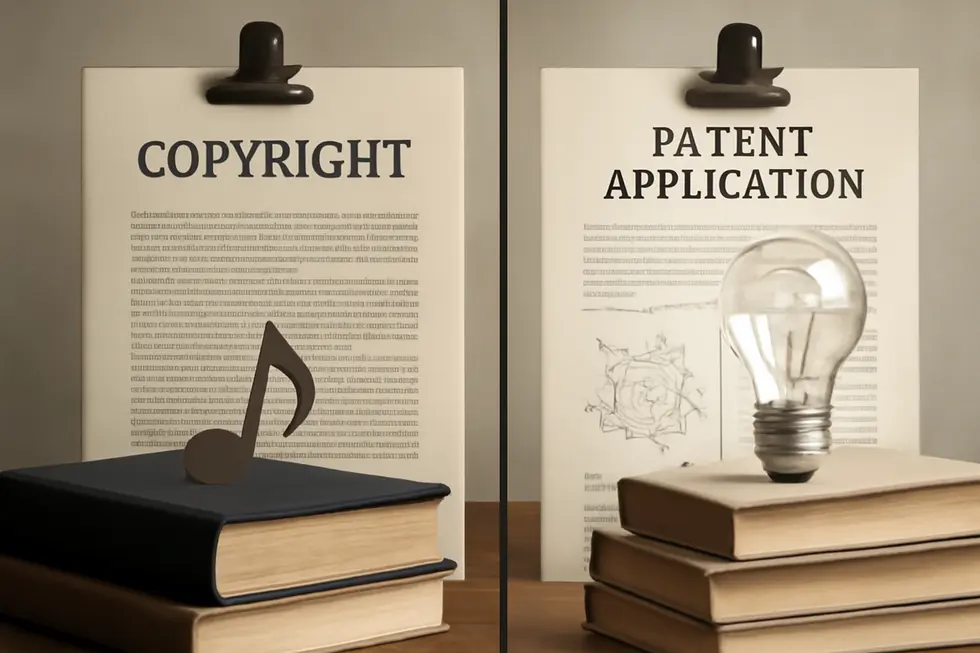
1. Defining Technological and Functional Boundaries in Copyright and Patent Law
Copyright and patent protections fundamentally diverge in their coverage of technological and functional aspects within intellectual property law. Copyright safeguards the original expression of ideas—literary works, art, music, and even software source code—but carefully excludes the underlying ideas or functional methods themselves. On the other hand, patents offer protection for technological inventions and functional processes that meet strict requirements of novelty, utility, and non-obviousness. This includes machines, chemical compounds, and even software innovations that introduce new functional techniques enhancing computer operations. Crucially, copyright protection arises automatically upon fixation of the creative work, requiring no formal procedure, while patents demand detailed disclosure through a rigorous application process that publicly shares the invention’s specifics. The protection offered by patents is explicitly tied to the inventive concept and its applied functionality, safeguarding the core idea and innovative method from unauthorized use. For instance, in software, copyright protects the actual code as an artistic work, while patents can secure claims over new algorithms or processes that improve performance or functionality. This delineation enforces a balance: copyright nurtures creative expression, while patents incentivize technological progress. For a deeper understanding of copyright’s reach, see copyright language for business owners. Further details are available at https://ebizfiling.com/blog/copyright-vs-trademark-vs-patent/.
2. Economic Dynamics Shaping Innovation: Copyrights and Patents in Legal Context
The legal frameworks governing copyrights and patents create distinct economic environments that drive innovation in fundamentally different ways. Patents grant inventors a time-limited monopoly, usually 20 years, allowing exclusive control over technological inventions. This exclusivity incentivizes heavy investment in expensive and uncertain research and development, especially in sectors like pharmaceuticals and advanced technologies. However, such market control can lead to elevated prices and restricted access to essential innovations, exemplified by territorial pricing strategies sustained through patent law mechanisms.
Conversely, copyright protection—automatic upon fixation—focuses on the original expression of creative works, supporting cultural and creative industries with fewer entry barriers and lower enforcement costs. It encourages the dissemination and monetization of artistic and literary outputs without monopolizing underlying ideas or functional concepts. This balance fosters a marketplace where creative production thrives alongside greater public availability.
While patents drive technological advancement through exclusive rights and market segmentation, copyrights fuel cultural economies by safeguarding artistic expression and enabling licensing models. These diverging economic implications reflect their legal foundations: patents protect inventions’ utility, whereas copyrights preserve unique expression. Together, they form complementary forces underpinning innovation across industrial and cultural landscapes.
For deeper insights into how copyright operates economically within business environments, see copyright definition economics business. For further detailed analysis on patents’ economic impacts, consult the external resource referenced as [2].
3. Influence of Societal Values and Geopolitical Strategy on Copyright and Patent Law
The interplay between societal values and geopolitical interests profoundly shapes the legal distinctions between copyright and patent law. Copyright protection centers on safeguarding creative expression, reflecting cultural priorities that balance creators’ moral and economic rights with public access and education. These social perspectives influence doctrines like fair use and affect enforcement intensity, varying significantly across jurisdictions with diverse legal traditions. Conversely, patent law is tightly intertwined with national strategies to foster technological progress and economic competitiveness. Countries tailor patent standards—such as novelty and non-obviousness—to promote innovation while preventing overly broad monopolies. Geopolitical considerations drive robust patent protections for strategic industries like biotechnology and information technology, as states leverage IP policies to assert global influence. International treaties strive for harmonization but must accommodate these diverse priorities, resulting in complex, context-dependent legal frameworks. Together, copyright and patent laws not only protect distinct subject matters but also embody deeper cultural and geopolitical philosophies that continually redefine their legal foundations. For further insights on balancing creator rights and public access, see copyright law and public domain.
Chapter 2: Scope and Subject Matter in Copyright v Patent Protections
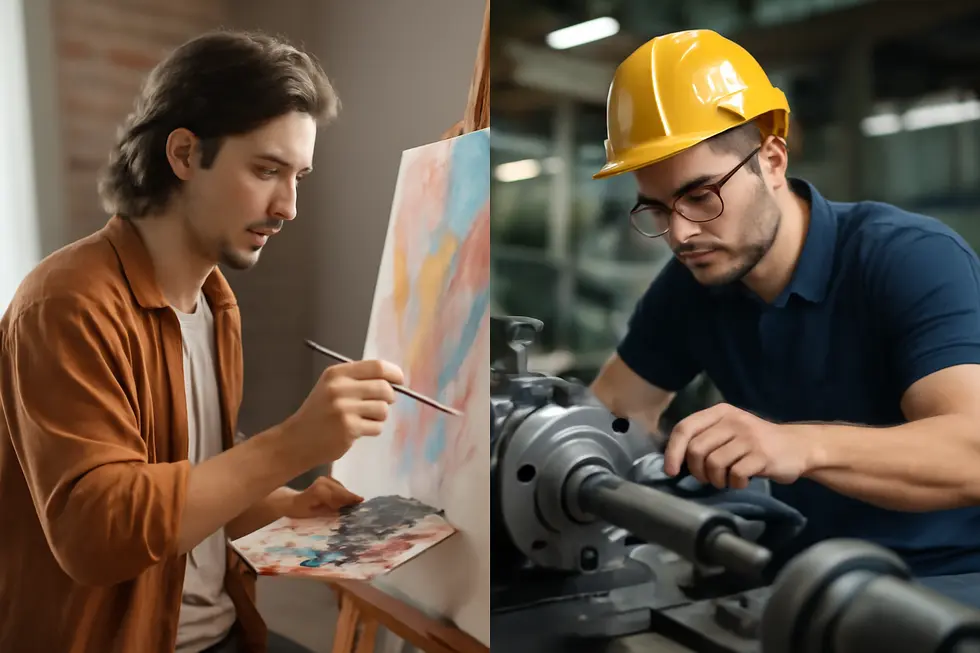
1. Defining Boundaries: How Copyright and Patent Laws Draw the Lines of Protection
The scope of protection under copyright and patent law reveals fundamentally distinct approaches to safeguarding intellectual property. Copyright centers on the original expression of ideas once fixed in a tangible form, such as literary works, music, art, or software code. Crucially, it shields the specific way creators manifest their concepts, not the ideas, facts, or methods behind them. For example, copyright protects the text of a book but not the underlying themes or factual information within. This protection is automatic upon fixation and extends for the author’s lifetime plus seventy years, offering broad coverage of expressive form but excluding functional or technical elements.
In contrast, patents focus exclusively on inventive, functional innovations—new machines, processes, or chemical compositions that offer novel, useful, and non-obvious advancements. The scope of patent protection is precisely defined by patent claims, which delineate the boundaries of the invention’s technical features. This means infringement hinges on whether another product or process falls within these claim limits, often assessed element by element. Patent protection requires a formal application process and lasts typically twenty years from filing, reflecting a narrower but more rigorously defined coverage focused on functionality rather than creative expression.
Together, these laws complement creativity and innovation by protecting different facets of intellectual property: copyright safeguards how ideas are uniquely expressed, while patents protect the underlying functional inventions themselves. This distinction is essential for understanding the distinct legal frameworks and their roles in encouraging original creativity and technological progress.
For more detailed insights on creative protections, see copyright information for books.
Source: ebizfiling.com intellectual property law resources.
2. Defining the Core Subject Matter: Expression Versus Invention in Copyright and Patent Law
Defining Subject Matter in Copyright and Patent Protections centers on the fundamental distinction between protecting how ideas are expressed and what inventions encompass. Copyright safeguards original creative expressions—such as novels, music compositions, paintings, and software code—once fixed in a tangible medium. It protects the specific form the idea takes but expressly excludes the underlying ideas, concepts, facts, or methods contained within the work. For instance, a novel’s storyline or a painting’s theme cannot be copyrighted, only the unique way these ideas are depicted or written.
In contrast, patent protection targets novel, useful, and non-obvious inventions that offer technical or functional advancements. These include processes, machines, compositions of matter, or articles of manufacture. Patents protect the actual invention itself—its operational or mechanical aspects—rather than merely the expression of those ideas. Importantly, purely abstract ideas, natural laws, or mathematical formulas without concrete application remain unpatentable.
The scope of a patent is defined by its claims, which precisely specify the boundaries of the invention, requiring clear and detailed disclosure. This contrasts with copyright’s automatic protection upon fixation without mandatory formal claims. Ultimately, copyright draws its boundary at original expression, whereas patents cover the inventive substance and utility of new technological developments.
For further details on copyright scope, see copyright information example business.
More on patent subject matter eligibility at National Law Review.
3. Navigating Boundaries: How Copyright and Patent Define What They Protect
Copyright and patent protections serve the shared goal of rewarding innovation but protect fundamentally different subject matters and operate within distinct scopes. Copyright secures the original expression of creative works—literary texts, music, art, and software code in fixed form. It shields how an idea is conveyed rather than the underlying idea itself. Conversely, patents grant exclusive rights over new inventions or innovations, covering functional aspects such as machines, processes, or chemical compositions, focusing on what something does or how it operates.
Though these protections rarely overlap directly, software illustrates an intersection: the code’s literal text can be copyrighted as a literary work, while patent law may protect the novel technical functions behind algorithms, provided patentability criteria are met. However, copyright never extends to functional features, which remain patent domain.
Duration and procedural requirements differ significantly. Copyright arises automatically upon fixation and lasts for the author’s life plus decades, whereas patents require formal applications with precise claims and typically last around 20 years. Patent claims strictly define legal boundaries, often narrowly interpreted, while copyright protection is broader over expression.
This contrast reinforces how copyright nurtures cultural and artistic creativity, whereas patents drive technological progress by protecting inventions’ utility and novelty. For more on related copyright protections, see copyright definition for computer works.
Chapter 3: Duration and Requirement Differences in Copyright v Patent Laws
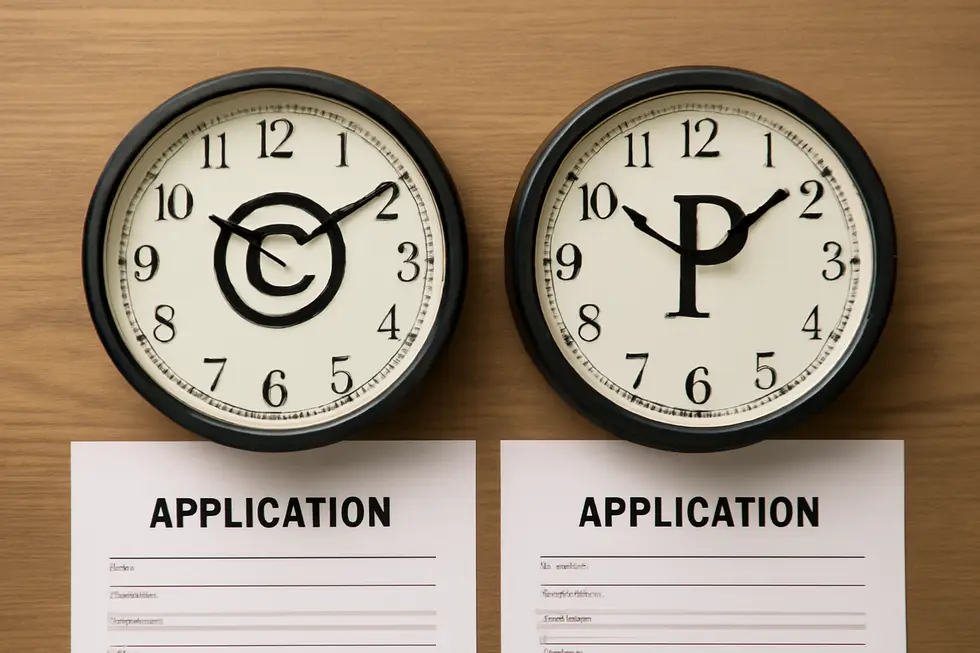
1. Contrasting Protection Terms of Copyrights and Patents: Balancing Innovation and Cultural Legacy
The durations of copyright and patent protections reflect their distinct roles in encouraging creativity and technological advancement. Copyright extends protection for the author’s life plus 70 years, fostering long-term cultural preservation and rewarding creators and their heirs. This extended term secures ongoing financial benefits and supports the sustained dissemination of artistic and literary works. In contrast, patents grant exclusive rights typically for 20 years from the filing date, providing inventors a limited but powerful incentive to innovate while ensuring inventions eventually enter the public domain. This balance promotes technological progress by allowing others to build upon expired patents, accelerating development and dissemination.
Unlike copyright, which arises automatically upon fixation of a work, patents require formal application and rigorous examination to establish novelty and usefulness. The limited patent term can be shortened if maintenance fees lapse and occasionally extended due to administrative delays. This procedural difference aligns with the shorter duration, emphasizing prompt disclosure and public sharing.
Together, these contrasting durations illustrate deliberate policy choices: safeguarding creative expression with enduring protection while fostering innovation with time-sensitive exclusivity. For more on copyright’s cultural role and protection mechanisms, see copyright information for books. Detailed patent term information is available at PatentPC.
2. Navigating Novelty and Formalities: The Divergent Entry Criteria for Copyright and Patent Protection
A fundamental distinction between copyright and patent law lies in their qualifying criteria and procedural pathways. Copyright arises automatically once an original work is fixed in a tangible medium—requiring minimal formalities. This protection hinges primarily on originality, meaning the author must have independently created the work with some minimal creativity. Crucially, copyright does not require novelty; the underlying ideas or concepts may be well known, but only the specific expression merits protection. Conversely, patent protection is contingent on rigorous novelty, utility, and non-obviousness standards. The invention must be entirely new, functionally useful, and not obvious to a skilled person in the relevant field. To secure a patent, inventors undergo a meticulous application process involving detailed technical disclosures, claims, and examinations that often consume significant time and expense. This formal procedure ensures patents only protect genuine technological advances, while copyright safeguards creativity without demanding uniqueness or application of a formal vetting process. Understanding these distinctions clarifies how copyright favors expressive originality with automatic protection, whereas patents require official approval to guard novel innovation. For deeper insights into copyright terms and protections, see copyright information for books. External detailed guidance on patent requirements is available via the United States Patent and Trademark Office (USPTO) resources.
3. How Duration and Formalities Shape Innovation and Access in Copyright and Patent Systems
Patents offer protection for about 20 years, requiring inventors to publicly disclose detailed technical information. This disclosure not only incentivizes inventors to commercialize rapidly but also accelerates technological progress by allowing others to build on patented knowledge once the patent expires. However, the high cost and regulatory demands can impede smaller innovators. By contrast, copyrights provide much longer protection, often lasting the creator’s lifetime plus 70 years, automatically secured upon creation without formalities. This encourages sustained economic benefits for authors and their heirs, particularly in creative fields like literature and music, but may delay the entry of works into the public domain, limiting broader cultural reuse. Additionally, while patents demand active maintenance and transparency to prevent abuse, some secrecy—such as secrecy orders—can hinder innovation. Meanwhile, copyright’s focus on expression rather than ideas fosters creative diversity without restricting functional inventions. Altogether, the contrasting durations and requirements of copyrights and patents create distinct economic incentives and technological impacts, balancing sustained creative investment with rapid innovation diffusion. For deeper insight into how copyrights define economic value in creative enterprises, see copyright definition economics business. Additional details on patent duration and regulatory effects can be found in referenced patent duration studies [1].
Chapter 4: Economic and Innovation Impacts of Copyright v Patent Systems
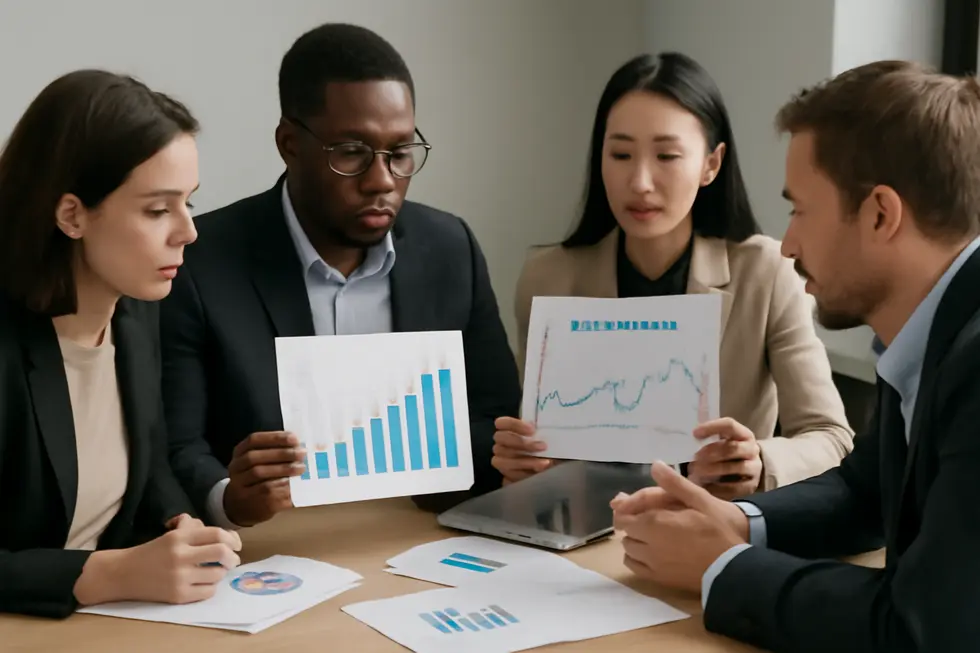
1. Sustaining Innovation and Growth: The Economic Dynamics of Copyright and Patent Protections
Copyright and patent systems are foundations that drive economic development by encouraging creativity and invention through legal safeguards. Patents fuel technological progress by granting inventors exclusive rights, incentivizing investment in costly research and development. This exclusivity not only fosters innovation but also supports licensing arrangements, enabling technology transfer to firms that commercialize new inventions. However, issues like patent examination delays can dampen innovation momentum and affect competitiveness, especially within high-tech industries.
Conversely, copyright protection secures the exclusive rights of creators over their original expressions, including software and artistic works. By preventing unauthorized replication and piracy, copyright preserves economic value, motivating creators to innovate and sustain quality. Both systems, while distinct in their focus—patents on functional inventions and copyrights on creative expressions—form integral pillars supporting vibrant innovation ecosystems. Effective management and timely enforcement of these rights amplify their economic benefits, driving investment and growth across sectors.
For more insights on how copyright supports software innovation, see copyright-definition-computer. Further reading on patent licensing and its role in innovation acceleration is available here.
2. Navigating Innovation in Software and Creative Industries: Balancing Copyright and Patent Protections
Technological and industry-specific innovation in the software and creative sectors demands a careful balance between protection and openness. Copyright automatically secures the expression of software code and artistic works upon creation, offering accessible protection for creators. Patents, by contrast, protect novel processes and functionalities in software but require a complex examination proving novelty and non-obviousness, often imposing higher costs. Combining these protections strategically enhances competitive advantage by guarding both creative expression and inventive features.
In creative industries, traditional copyright’s model of temporary exclusivity faces challenges from digital abundance and AI-generated content. This calls for a shift toward frameworks encouraging transparency and collaborative innovation rather than rigid monopolies. Patent systems also face scrutiny as large-scale strategic patenting can deter competition and slow innovation, especially for emerging technologies like AI and biotechnology where patentability criteria blur.
Adapting IP laws to these sectors involves refining examination standards and promoting international harmonization. AI’s dual role as a creator and enforcer complicates attribution but also offers tools for managing rights efficiently. Overall, modernizing IP frameworks to reflect digital realities will better foster genuine innovation over artificial scarcity. For more insights, explore this detailed discussion on copyright law and the public domain and emerging IP reforms in the AI era.
3. Navigating Innovation Incentives: Economic Trade-Offs and Challenges in Copyright and Patent Management
Balancing innovation incentives within copyright and patent systems requires navigating complex economic trade-offs and systemic challenges. Patents grant innovators temporary monopolies, encouraging costly and risky development—especially visible in pharmaceuticals—yet this can lead to high prices and restricted access. Conversely, excessive patent enforcement or litigation, particularly from patent trolls, drains resources from genuine research, potentially stalling innovation. Additionally, patent thickets—dense webs of overlapping patents—complicate the innovation landscape, raising barriers for newcomers and impeding technological progress. Invalid or overly broad patents exacerbate these issues, prompting proposals to enhance examination rigor and reconsider fee structures.
Market power consolidation through patent portfolio acquisitions raises antitrust concerns, risking monopolization of key technologies and restricting competition. Policymakers strive to maintain vibrant, competitive markets that foster ongoing innovation while protecting inventors’ rights. The issue of reverse engineering highlights a delicate balance: permitting it stimulates follow-on innovations and market competition but must not undermine the original creator’s ability to recoup R&D investments.
Effectively managing these factors demands calibrated legal frameworks and policy oversight to optimize incentives, minimize monopolistic drawbacks, and sustain innovation that benefits society broadly. For a deeper look at the challenges patent trolls impose on innovation, see this insightful external discussion [1].
Chapter 5: Practical Applications and Enforcement of Copyright v Patent Rights
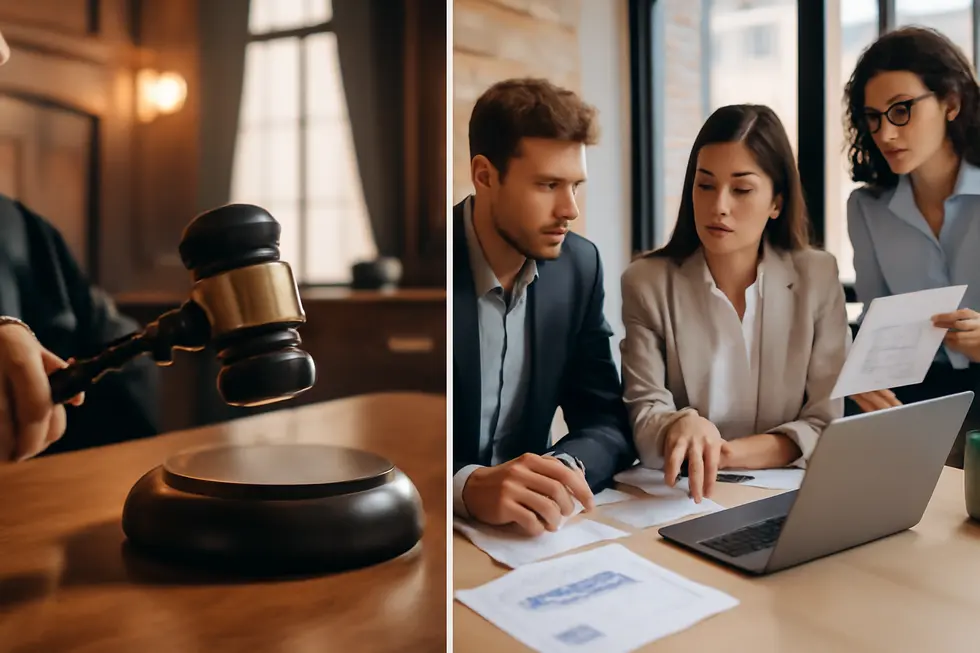
1. Harnessing Technology for Effective Enforcement of Copyright and Patent Protections
Harnessing Technology for Effective Enforcement of Copyright and Patent Protections
Technology plays distinct but pivotal roles in enforcing copyright and patent rights, reflecting their unique legal frameworks. For patents, detailed technological disclosures are essential. Applicants must articulate precise technical specifications, often supported by diagrams, to define the innovation’s scope and prove novelty beyond abstract ideas. This is particularly critical in complex fields such as artificial intelligence, where describing algorithmic architectures and functional enhancements forms the basis of patent claims. Enforcement further integrates technological tools like encryption and secure sharing platforms to protect sensitive invention details during licensing and commercialization. In contrast, copyright protection centers on the original expression fixed in a tangible medium, commonly enforced through Digital Rights Management (DRM), watermarking, and content identification technologies. These tools prevent unauthorized copying or distribution while respecting that copyright safeguards expression, not functional ideas. Strategically, businesses often combine both copyright and patent protections, alongside trademarks and trade secrets, creating layered defenses that leverage technological enforcement mechanisms specialized to each domain. This approach mitigates risks from patent expirations or circumvention and preserves both technical innovation and creative expression. Such tailored technological integration underpins the practical protection and enforcement of intellectual property in modern innovation ecosystems. For more on copyright’s scope and enforcement, see trustworthy resources on copyright information for books.
External Reference: Understanding the role of neural networks in AI patent claims is further detailed in specialized patent literature addressing technological disclosures.
2. Balancing Costs and Benefits: Economic Realities in Enforcing Copyright and Patent Protections
Understanding the economic realities behind enforcing copyright and patent protections reveals distinct trade-offs vital for strategic intellectual property management. Patents demand significant financial investment due to complex application procedures, ongoing maintenance fees, and costly enforcement often involving litigation over intricate technical details. This high expense is offset by stronger exclusivity rights on functional inventions and a fixed 20-year term that can justify upfront costs when innovation drives market advantage. Conversely, copyright protection arises automatically and incurs minimal initial expense, providing long-term security lasting the author’s life plus seventy years. Copyright’s narrower protection, limited to original expression rather than ideas or functions, often leads to simpler, less costly enforcement, though it offers less market exclusion power. These economic contrasts influence decisions by creators and businesses, balancing speed, cost, and exclusivity to align with their intellectual property’s nature and commercial goals. Design patents sometimes serve as an economical compromise, protecting aesthetic elements and supplementing broader innovation strategies in competitive environments. Such nuanced economic considerations underscore why choosing between copyright and patent rights requires assessing both immediate costs and enduring benefits within an organization’s larger innovation and enforcement framework. For further insights on copyrights in business contexts, see copyright information for books. External studies on patent enforcement complexities provide additional perspective on litigation and licensing costs.[5]
3. Navigating Societal Values and Geopolitical Currents in Copyright and Patent Enforcement
The enforcement of copyright and patent rights reflects deep societal values and complex geopolitical dynamics. Copyright, protecting creative expressions like literature and software, is shaped by cultural norms that influence what is considered fair use and ethical compensation. These societal attitudes vary widely, especially as digital sharing challenges traditional boundaries. Geopolitically, copyright laws differ by country, with international treaties striving for harmony but often accommodating national legal subtlety. This results in intricate cross-border licensing and enforcement tailored by economic and cultural priorities.
Patents, by contrast, safeguard technological inventions with strict novelty and utility criteria. Their enforcement is often entangled with global trade politics, where export controls and sanctions can restrict technology transfer amid international rivalry. Patent protection’s finite 20-year term is a focal point in debates balancing innovation incentives against monopolistic risks, especially where essential technologies are concerned.
Thus, copyright enforcement demands balancing public cultural access with creator rights, while patent enforcement requires navigating a technologically driven, geopolitically sensitive landscape. Understanding these sociopolitical forces is crucial for effective intellectual property strategies within the global economy. For a deeper understanding of copyright’s cultural role, see copyright language for business owners.
Final thoughts
Protecting your business’s intellectual assets requires a nuanced understanding of how copyright and patents serve different but complementary roles. Copyright protects the unique expression of your creative works automatically and sustains their exclusivity well beyond your lifetime, providing a lasting shield for artistic and literary content. Conversely, patents safeguard the functional innovations and inventions that often drive technological advancement and market competition, but require deliberate application and last for a limited term. Grasping these distinctions empowers business owners to choose appropriate protection methods, fostering innovation while maximizing commercial benefits. Ultimately, strategic use of both copyright and patent rights can strengthen your business foundation, fortify your competitive position, and open new avenues for value creation.
Your IP is the foundation of your success – let’s protect it together before it’s too late. We can’t wait to help you turn your ideas into legally secured assets.
About us
undefined
